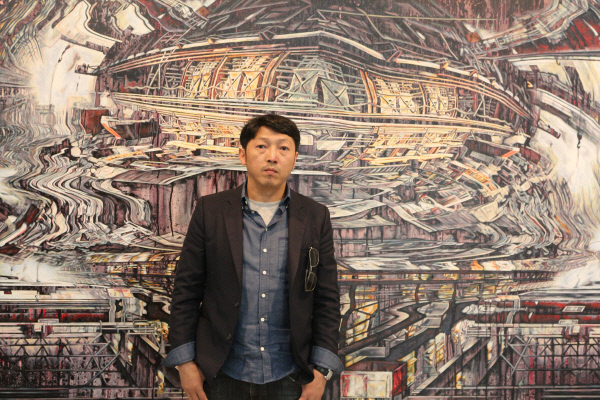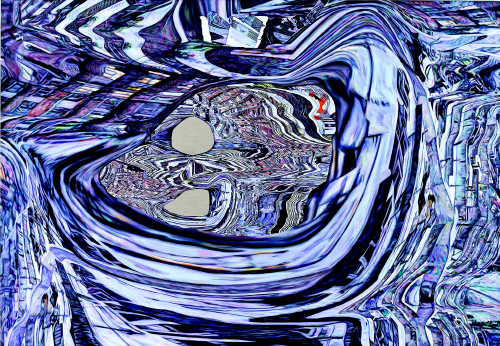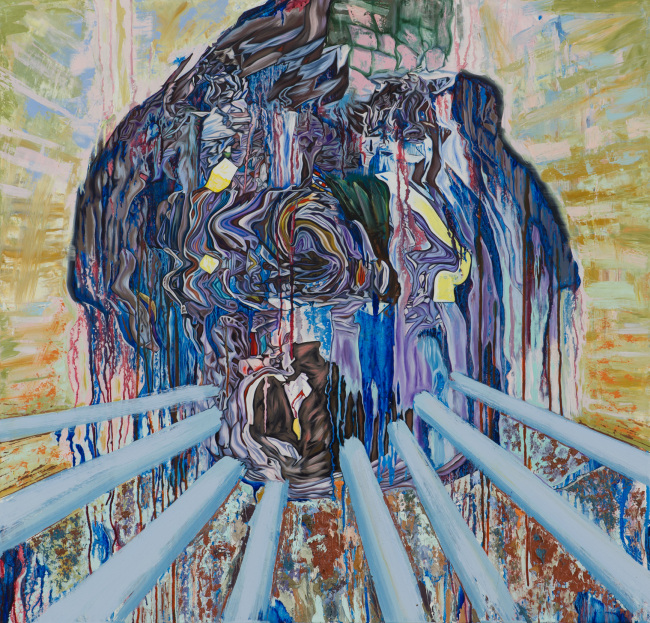진 마이어슨은 잡지, 텔레비전, 인터넷 등 미디어에 의해 그려진 이미지를 왜곡시키고, 늘리고, 줄이며, 회화적 언어로 재해석하는 작업을 통해 추상회화의 맥을 잇고 있다. 미디어에서 무작위로 추출한 군중, 자연, 기계 등의 이미지를 토대로 작가 주변의 풍경을 재해석한 이미지들과 함께 묘한 색감들로 뒤덮여 있다. 많은 회화작가들이 디지털 이미지의 아이디어로 작업하는 것과는 다르게 마이어슨의 이미지 선정 과정은 구조화 측면에 있어서 무작위이거나 특별히 계획적이지 않다. 뒤섞인 조형의 구성으로써 다른 이미지들과 함께 콜라주를 만들어내는 원본 이미지들은 일차적으로 온라인 이미지 검색의 과정을 통해 찾아진다.
명백하게 스튜디오 회화 작업의 범위 내에서 활동하는 진 마이어슨은 이와 같은 최근의 문화적 진화의 역사에 비정통적인 창을 제시한다. 그는 스케치와 실루엣, 텍스처에 수평적으로 작업하는 것으로부터 수직적으로 표면의 세세한 디테일을 교정하는 마지막 과정까지 모두 숙련된 어시스턴트과 함께 작업하는 소위 전통적인 아티스트 스튜디오라 불릴만한 곳을 운영한다. 구성과 실행의 과정을 통해 연출과 전개의 역할에 관한 개념을 옹호하고 있는 마이어슨의 작업은 단순히 이미지를 선정하고 그것을 회화로 생산해내는 직선적 서술과정을 반영하고 있지 않다. 스케치를 기초로 하되 시간의 흐름에 따라 원화가 가진 요소들은 재채색과 재편성과 같은 이행을 자주 결합하기 때문에, 작품의 구성은 완성되어가는 과정에서 매우 급격히 변화하는 것처럼 보인다.
1972년 인천에서 태어난 진 마이어슨은 뉴욕, 파리, 서울에서 작업을 해왔으며 현재 홍콩을 기반으로 활동하고 있는 미국작가이다. 마이어슨은 1995년 미니애폴리스 컬리지 오브 아트 앤 디자인에서 학부를, 1997년 펜실베니아 아카데미 오브 더 파인아트에서 석사를 마쳤다. 구상주의 회화의 부흥에 크게 이바지 한 것으로 알려진 그는 런던 사치갤러리의 ‘회화의 승리’ 전시부터 블라디미르 로아펠트(Vladimir Roitfeld)가 기획한 전시인 ‘비난의 소리’까지 주요 전시에 참여해왔다. 2013년도에는 학고재에서 개인전을 가졌고, 현재 그의 작품은 뉴욕 구겐하임 미술관을 비롯해 뉴욕 첼시 미술관과 자카르타 유즈 미술관에도 소장되어 있다.

































